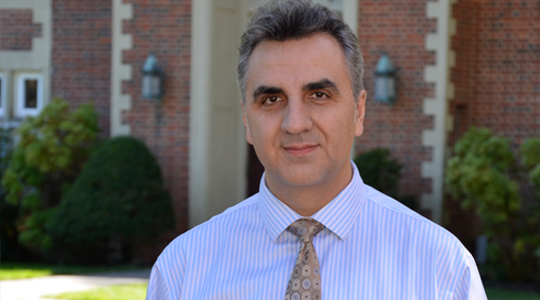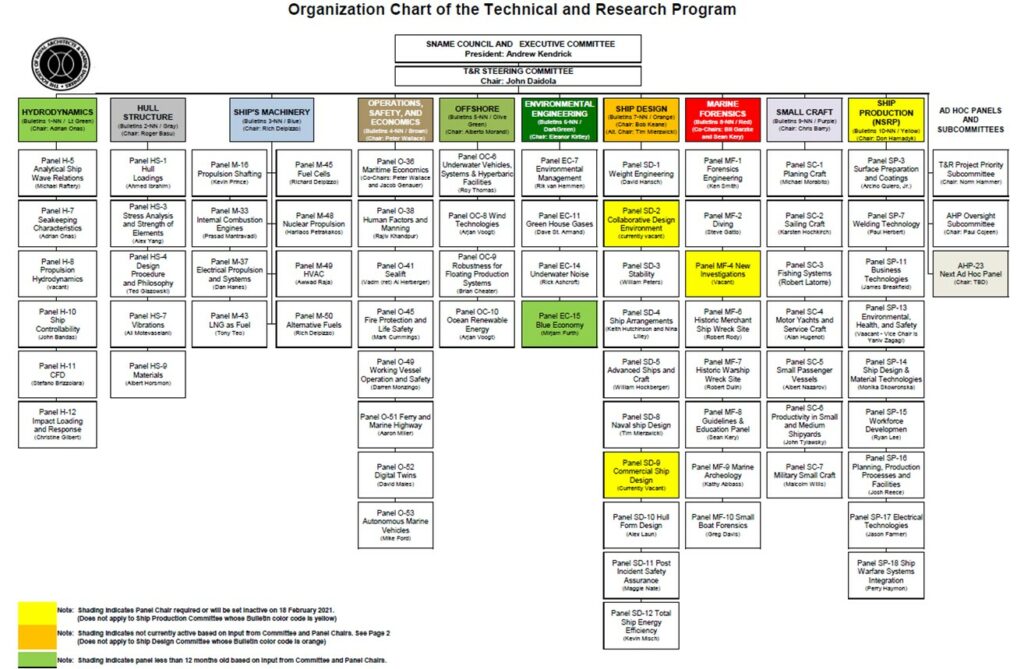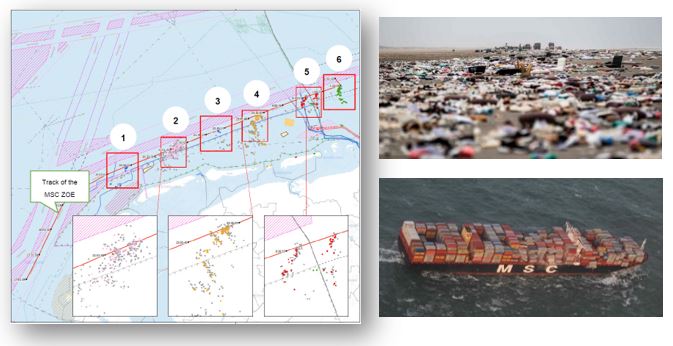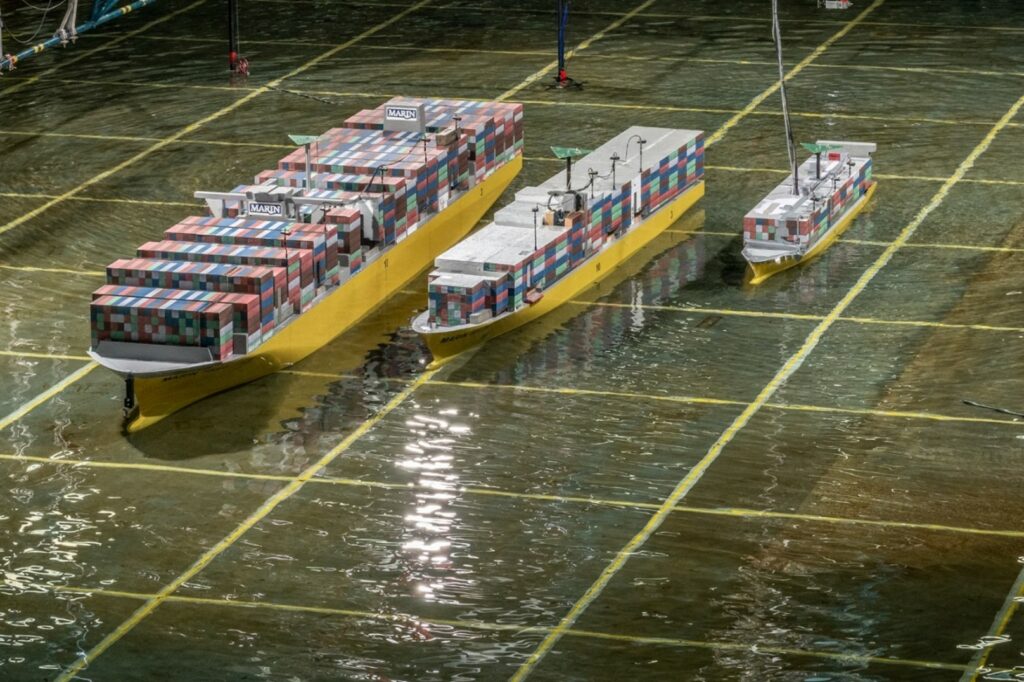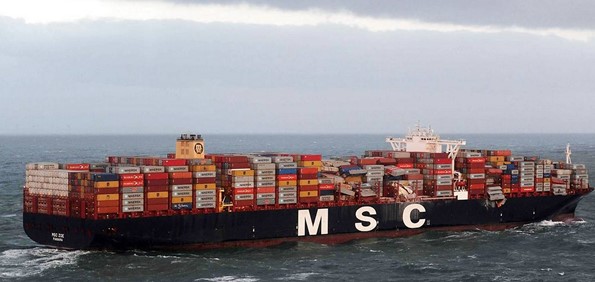Dr. Adrian S. Onas is a Naval Architect with over 25 years of ship design, operation, and research experience in the maritime industry and academia. His experience includes a 15-year career with DNV, followed by an ongoing academic appointment as Professor of Naval Architecture and Director of the Circulating Water Channel at Webb Institute since 2011. Dr. Onas’ interests include extreme events in nonlinear systems, biomimetics, theoretical and computational hydromechanics, and innovative ship design. Dr. Onas holds a Ph.D. in Ocean Engineering from Stevens Institute of Technology. He is a member of the Society of Naval Architects and Marine Engineers (SNAME), the Royal Institution of Naval Architects (RINA), and the International Hydrofoil Society (IHS).
Professor Onas is the new Chair of the SNAME T&R Hydrodynamics Committee, within which he also leads the Seakeeping Characteristics Panel (H-07). He is now a member of the SNAME Council and SNAME T&R Steering Committee. Prof. Onas is also a member of the SNAME T&R Marine Forensics Committee. While he is excited about these new opportunities to contribute to SNAME in a meaningful way, he also feels that Webb students and alumni need to learn more about the SNAME T&R Program and potentially join one of its panels sometimes after graduation. He thinks it is a most rewarding experience to contribute by improving the technical knowledge base to assist the naval architecture and marine engineering community in designing safer ships, while reducing the impact on our environment.
SNAME has had a long tradition of spearheading programs that helped refine our understanding of how marine vehicles and offshore structures respond to their operating environment through quality research in several key disciplines. The importance of encouraging and sponsoring research is clearly outlined in SNAME’s mission. Such research activities have been carried out through SNAME’s Technical and Research (T&R) Program.
According to SNAME’s website, “The Society encourages and sponsors maritime research into areas of the ocean sciences by means of the Technical and Research (T&R) Program, with particular emphasis on marine vehicles and offshore structures. The T&R Program consists of ten T&R Committees, each dedicated to a general area of research. T&R Panels serve as subcommittees of each T&R Committee, to provide more focused research into defined areas.”
SNAME T&R program, with its ten committees, comprises a total of 72 panels, including one ad-hoc panel and two sub-committees. Here is a list of SNAME T&R committees and current chairs:
- Hydrodynamics (H); Chair: Adrian S. Onas, Webb Institute
- Hull Structure (HS); Chair: Roger I. Basu, Roger Basu & Associates Inc.
- Ship’s Machinery (M); Chair: Richard D. Delpizzo, American Bureau of Shipping (ABS)
- Operations, Safety and Economics (OSE): Chair: Peter K. Wallace, SeaOne Holdings, LLC.
- Offshore (OC); Chair: Alberto C. Morandi, Gusto MSC
- Environmental Engineering (EC); Chair: Eleanor K. Nick Kirtley, Green Marine
- Ship Design (SD); Chair: Robert G. Keane, Jr., Ship Design, USA, Inc.
- Marine Forensics (MF); Chair: William H. Garzke, Jr., CACI
- Small Craft (SC); Chair: Christopher D. Barry, USCG SFLC
- Ship Production – NSRP (SP); Chair: Donald M. Hamadyk, Newport News Shipbuilding
The organization chart of the SNAME T&R Program is shown in Figure 1 below.
The T&R Program provides an opportunity to SNAME members who are interested in sharing their expertise to advance research and help publish their results in the form of bulletins and technical reports. Due to recent improvements of the SNAME portal, virtually all published T&R bulletins or technical report can now be accessed for a nominal fee. The big challenge, of course, is to attract passionate SNAME members with the right expertise that can find the time to volunteer in the T&R Program. This is required by the high standard historically set by SNAME in the bulletins and reports published by the T&R committees. Such bulletins are used extensively by the industry, academia and often considered when regulatory requirements are updated. However, in the case of the Hydrodynamics Committee, although 44 bulletins were published between 1947-1993, the most recent is Bulletin 1-44, “Design Workbook on Ship Maneuverability”, (1993, 260 pages).
The SNAME T&R Hydrodynamics Committee is presenting much needed new material now and is in the process of drafting two new bulletins: (1) CFD-Informed Maneuvering Model for Autonomous Underwater Vehicles (AUVs) by D. Njaka, S. Brizzolara and D. Stilwell, editor A. Onas (CFD Marine Panel, H-11); (2) Hydrodynamic Loading of Marine Vehicles by A. Onas et al; (Seakeeping Characteristics Panel, H-07). The hydrodynamics committee is planning to add new panels soon, including Biomimetics and Extreme Events.
The Hydrodynamics Committee held its kick-off webinar on May 7, 2021, titled “Seakeeping in Modern Ship Design”. It was presented by Prof. Onas and Mr. Bastien Abeil (MARIN). The webinar included a brief review of the theory of seakeeping, and a summary of the problems encountered in modern commercial ship design and operation. The supporting case study presented the findings of a series of model tests performed at MARIN in bathymetric and metocean conditions representative of those encountered by the Ultra-Large Containership MSC Zoe. Her accident occurred off the coast of the Netherlands in early 2019 and caused the loss of an estimated 345 containers, producing heavy of an IMO designated Particularly Sensitive Sea Area (PSSA), Fig. 2.
It was found that although ships are designed to avoid low transverse stability, excessively high stability can also lead to hazardous situations (MSC Zoe’s beam is 59m). Large transverse metacentric heights can cause the ship to experience roll resonance in beam seas. Combined ship motions can then induce accelerations on deck and container stacks that exceed design values, which otherwise would be considered well within safety margins by classification societies. In addition, such resonance events are producing contact with the seabed in shallow waters, as it was clearly demonstrated experimentally in the seakeeping basin at MARIN (see Fig. 3).
The dynamic stability failure mode called parametric rolling, was mainly found to affect container ships with more conventional (reduced) stability and varying waterplane areas in incident waves. Feeders seem to be increasingly affected by this dynamic stability failure mode, with the smallest of the three scale models shown in Fig. 3. Parametric roll can also yield accelerations on container stacks that are far beyond the design limits of lashing equipment.
In this webinar, a brief overview of the work currently under progress was given in which the motion response of smaller ship sizes (Feeder and Panamax classes) in the North Sea is put under scrutiny. SNAME members can watch the video of the webinar “Seakeeping in Modern Ship Design” by logging on the SNAME webinar library at https://www.sname.org/webinar-library-load-video/1955).
As described on their website, Maritime Research Institute Netherlands (MARIN) “is a globally recognized top institute for hydrodynamic and nautical research.”
This article is also available on Webb News.

